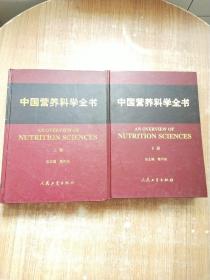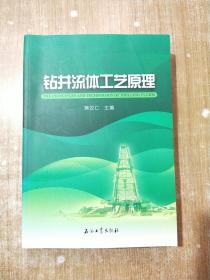
混凝土与可持续发展【库存书】
正版现货内有签名
¥ 30 1.0折 ¥ 298 九五品
仅1件
北京朝阳
认证卖家担保交易快速发货售后保障
作者隋同波、[挪威]Per Jahren(珀·雅润) 著
出版社化学工业出版社
出版时间2013-09
版次1
印刷时间2013-09
印次1
装帧精装
货号D3架3层
上书时间2020-11-22
- 在售商品 暂无
- 平均发货时间 5小时
- 好评率 暂无
- 店主推荐
- 最新上架
商品详情
- 品相描述:九五品
- 内容完好无笔记划痕等问题
图书标准信息
- 作者 隋同波、[挪威]Per Jahren(珀·雅润) 著
- 出版社 化学工业出版社
- 出版时间 2013-09
- 版次 1
- ISBN 9787122179357
- 定价 298.00元
- 装帧 精装
- 开本 16开
- 纸张 其他
- 页数 440页
- 正文语种 英语
- 【内容简介】
-
《混凝土与可持续发展》全面分析了世界混凝土可持续发展所面临挑战的复杂性和应对方案的多样性。第一章主要从混凝土对社会与经济发展的作用和影响的角度对混凝土可持续性问题进行了探讨;第二章重点介绍国际范围内混凝土可持续发展所涉及的环境评价工具和方法论,并分析了不同的关注焦点、评价方法和时限对混凝土可持续性的影响;第三、四章着重分析了水泥混凝土领域所面临的排放、捕集与吸收和循环的挑战;第五章分析了其他方面的环境挑战;第六、七章给出了综合评述及未来发展趋势的分析;最后列出了500多条参考文献,以供有兴趣的读者深度查阅。
《混凝土与可持续发展》主要探讨在全球范围内提升混凝土可持续性的系统思考方法和技术途径,以此鼓励和帮助有兴趣的读者(包括政策制定者,建筑与材料领域的专家、工程师,高等学校的教授、学生,以及致力于环境与可持续发展领域的人员等)针对混凝土可持续发展所面临的问题,用系统方法论对其资源可获取性、技术与经济可行性、环境相容性以及社会责任等要素进行全方位的思考和行动。 - 【目录】
-
ForewordbyV.MohanMalhotraxi
ForewordbyWeiSunxiii
Prefacexv
Acknowledgementsxvii
Theauthorsxix
1Introduction
1.1Theeconomicalimpactofconcrete
1.2Concreteandsocialprogress
2Environmentalissues
2.1Global/regional/localaspects
2.2Ratingsystems
2.3Evaluationsystems/tools
2.4ISOmethodology/standards
2.5Variationinfocus
2.5.1Differentsectorsoftheconcreteindustrytendtofocusondifferentaspects
2.5.2Focus:Lifetimeexpectancyperspectives
2.5.3Focus:
2.5.4Focus:
2.6Traditions/testing
2.6.1Example
2.6.2Example
2.6.3Example
3Emissionsandabsorptions
3.1General
3.2CO2emissionfromcementandconcreteproduction
3.3Emissionofothergreenhousegases
3.4Absorption/carbonation
3.5Thetoolsandpossibleactions
3.5.1Increasedutilisationofsupplementarycementingmaterials
3.5.2Flyash
3.5.3Blastfurnaceslag
3.5.4Silicafume
3.5.5Metakaolin
3.5.6Ricehuskash(RHA)
3.5.7Naturalpozzolans
3.5.8Otherashesandslags
3.5.8.1Sewagesludgeincinerationash(SSIA)
3.5.8.2Ferroalloyslag
3.5.8.3Bariumandstrontiumslag
3.5.8.4Othertypesofslag
3.5.8.5Ashesfromco-combustion
3.5.8.6Woodash
3.5.8.7Fluidisedbedash
3.5.9Limestonepowder
3.5.10Othersupplementarycementitiousmaterials
3.5.11Improvementsandmoreefficientcementproduction
3.5.12New/othertypesofcement/binders
3.5.12.1High-belitecement(HBC)
3.5.12.2Sulphurconcrete
3.5.13Increasedcarbonation
3.5.14Betterenergyefficiencyinbuildings
3.5.15Improvedmixturedesign/packingtechnology/waterreduction
3.5.16Increasedbuildingflexibility,andmoresustainabledesignandrecyclingpractice
3.5.17Miscellaneous
3.5.17.1Productionrestrictions
3.5.17.2Thetestingregime
3.5.18Carboncaptureandstorage(CCS)
3.5.18.1Capture
3.5.18.2Storage
3.6Variationinfocus
3.6.1Focus1:Lifetimeexpectancyperspective
3.6.2Focus2:
3.6.3Focus3:
3.7Someconclusions
4Recycling
4.1Recyclingofconcrete
4.1.1Norway
4.1.2Japan
4.1.3TheNetherlands
4.1.4HongKong,China
4.1.5General
4.1.5.1Processingtechnology
4.1.5.2Fines
4.2Recyclingofothermaterialsasaggregateinconcrete
4.2.1Usedrubbertiresinconcrete
4.2.2Aggregatemanufacturedfromfines
4.2.3Processedsugarcaneash
4.2.4Recycledplastic,e.g.,bottles
4.2.5Hempcreteandother“strawconcretes”
4.2.6Papercrete
4.2.7Oilpalmshelllightweightconcrete
4.2.8Glassconcrete
4.2.9Papermillashforself-compactingconcrete(SCC)
4.2.10Slag
4.2.11Recyclingof“doubtful”wasteasaggregate
4.2.12Ironminemillwaste(milltailings)
4.2.13Bauxiteresidue/redsand
4.2.14Copperslag
4.2.15Othermaterials
4.2.16Wastelatexpaint
4.2.17Fillersforself-compactingconcrete
4.3Recyclingofothermaterialsasreinforcementinconcrete
4.4Recyclingofothermaterialsasbindersinconcrete
4.4.1Wasteglass
4.4.2Recyclingoffluidcatalyticcrackingcatalysts
4.5Recyclingofcementkilndust(CKD)
5Theenvironmentalchallenges―otheritems
5.1Aggregateshortage
5.2Durability/longevity
5.3Energysavings
5.4Health
5.4.1Skinburn
5.4.2Thechromiumchallenge
5.4.3Compactionbyvibration
5.4.4Dust
5.4.5Emissionandmoistureinconcrete
5.4.6Formoil
5.4.7NOx-absorbingconcrete
5.4.7.1General
5.4.7.2Principleofreaction
5.4.7.3Thecatalyst
5.4.7.4Theeffects
5.4.7.5Concrete―productareas
5.4.7.6Otherexperiences
5.4.7.7Climatechangeandhealth
5.5Leakage
5.5.1General
5.5.2Leakageofpollutantsfromcementandconcrete
5.5.2.1Leakagefromthecementmanufactureprocess
5.5.2.2Leakagefromconcrete
5.5.3Concretetopreventleakage
5.6Noisepollution
5.6.1Noisereductioninconcreteproduction
5.6.2Noisereductionfromtraffic
5.6.3Reductionofnoisepollutioninbuildings
5.6.4Stepsoundreductioninstairways
5.7Radiation
5.7.1Effectsofradioactiveradiationonthehumanbody
5.7.1.1Alphaparticles(oralpharadiation)
5.7.1.2Betaparticles
5.7.1.3X-raysandgammarays
5.7.2Naturalradioactivityinbuildingmaterials
5.7.3Radiationfromcementandconcrete
5.7.4Radioactivityriskreductionwithcementandconcrete
5.7.4.1Concreteasashieldofradiation
5.7.4.2Encapsulationofradioactivematerialswithcementandconcrete
5.7.5Clearanceofradioactiveconcrete
5.8Safety
5.8.1Concreteasasafetytool
5.8.2Concretesafetylevelsinaclimatechangeperspective
5.9Water
5.9.1Watershortage
5.9.2Managingtheincreasedprecipitation
5.9.2.1Perviousconcrete
5.9.2.2Perviousgroundwithconcretepaversystems
5.9.2.3Delayingsystems
5.9.3Reuseofwashwaterfromconcreteproduction
5.9.4Escapeofwashwaterfromconcreteproductiontofreshwaterandthesea
5.9.5Foodsupply―artificialfishreefs(AFRs)
5.9.5.1History
5.9.5.2WherehaveAFRsbeenused?
5.9.5.3MotivationsforestablishingAFRs
5.9.5.4Designfactors
5.9.5.5Someexamples
5.9.5.6Restorationofcoralreefs
5.9.5.7TheTjuvholmenproject
5.9.6Erosionprotection
5.10Wastes
6Newpossibilitiesandchallenges
6.1Smallhydroelectricpowerstations
6.2Windmills
6.3Newrawmaterials/lowenergyandlowCO2cements
6.3.1Principleforclinkercompositiondesign
6.3.2Lowerenergyandlow-emissionclinkerpreparation
6.3.3PerformanceevaluationofHBC
6.3.3.1Strength
6.3.3.2Heatevolutioncharacteristics
6.3.3.3Chemicalcorrosionresistance
6.3.3.4Dryingshrinkage
6.3.3.5ExistingstandardsforHBC
6.3.3.6SimplifiedexplanationfortheexcellentperformanceofHBC
6.3.4Latestresultsonbelite-calciumSulfoaluminate(BCSA)cement
6.4Newconcreteproductsandcomponents
7Thefuture
References
Index
点击展开
点击收起
— 没有更多了 —
























以下为对购买帮助不大的评价